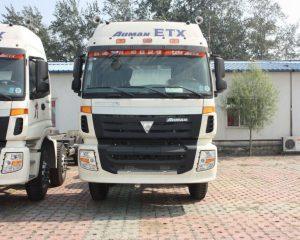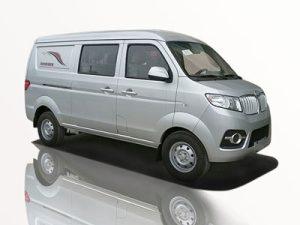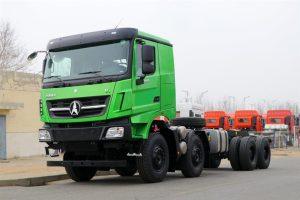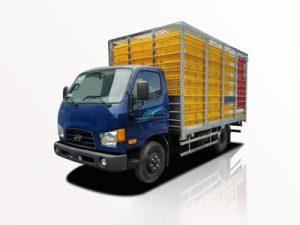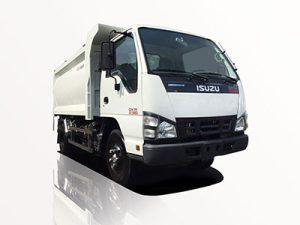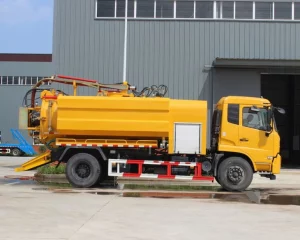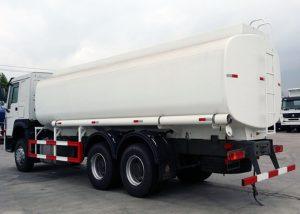Monday to Saturday - 8:00 -17:30
Understanding Cab Styles on Trucks: A Comprehensive Guide
Trucks are one of the most versatile and utilitarian vehicles on the road today. One of the most critical aspects of a truck’s design is its cab style. The cab not only dictates the overall look of the truck but also influences its functionality and comfort. This article delves into the different cab styles available on trucks, helping you make an informed choice whether you’re purchasing a new vehicle or simply want to learn more about this important feature.
The Importance of Choosing the Right Cab Style
Selecting the right cab style is essential for optimizing your truck for specific needs and preferences. The cab style affects storage space, passenger capacity, and overall versatility. Each cab configuration has unique benefits, which can cater to varied uses from commercial activities to personal leisure. Understanding these differences can help you make a choice that aligns with your requirements.
Overview of Truck Cab Styles
Truck cabs can be grouped into several different styles, each designed for specific purposes and user needs. Here’s a detailed look at the most common cab styles you’ll encounter:
1. Regular Cab
The regular cab design features a two-door configuration with a single row of seating, usually accommodating up to three passengers. This type of cab is ideal for those who prioritize cargo space in the truck bed over passenger capacity.
Advantages of Regular Cabs
- Maximized cargo area.
- Lightweight, enhancing efficiency and fuel economy.
- Cost-effective option.
Limitations of Regular Cabs
- Limited passenger space.
- Not suitable for larger families or frequent rides with multiple passengers.
2. Extended Cab
Extended cabs provide additional space behind the front seats. This configuration often includes rear-hinged doors, which make access to the back area easier, enhancing the seating to fit up to five passengers.
Advantages of Extended Cabs
- Increased passenger capacity.
- Versatile cargo options, with seats that may flip up for additional storage.
- More space provided for occasional passengers compared to the regular cab.
Limitations of Extended Cabs
- Less cargo space compared to a regular cab.
- May be less fuel-efficient due to added weight.
3. Crew Cab
The crew cab is designed for maximum passenger comfort, offering four full doors and a spacious rear seating area. It typically seats five to six passengers comfortably while still providing a usable truck bed.
Advantages of Crew Cabs
- Optimal for families or work teams needing space for multiple people.
- Enhanced comfort with ample head and legroom.
- Great for those who use their truck for both work and leisure.
Limitations of Crew Cabs
- Reduced cargo capacity in the truck bed.
- Generally higher price point and slightly lower fuel efficiency.
4. Mega Cab
The mega cab is a newer style that offers even more rear passenger room than the crew cab. It features a distinct design, maximizing the rear seat area while still maintaining a reasonable truck bed size.
Advantages of Mega Cabs
- Exceptional rear-seat legroom, ideal for long journeys.
- Versatile configurations for both passengers and cargo.
- Excellent for family use or as a mobile workspace.
Limitations of Mega Cabs
- Heavier and bulkier design may affect overall handling.
- Can have a higher initial cost compared to standard cab configurations.
5. Cab Chassis
The cab chassis is tailored for commercial use, providing a bare chassis and cab allowing customers to customize the truck further by adding various box styles as per industry needs (e.g., flatbed, dump bed, etc.).
Advantages of Cab Chassis
- Highly customizable to meet specific commercial requirements.
- Can support different body styles, making it versatile for trade use.
- Efficient for businesses with specific cargo needs.
Limitations of Cab Chassis
- Typically sold without a cargo area.
- Not suitable for personal everyday use without further customization.
Choosing the Right Cab Style for Your Needs
When selecting a cab style, it’s important to consider your primary use cases for the truck. Here are a few questions and tips to help you choose:
Questions to Consider
- How many passengers do I need to transport regularly?
- Will I prioritize cargo space over passenger comfort, or the other way around?
- What additional features or configurations will I require for work purposes?
- Am I willing to compromise on fuel efficiency for additional space?
Examples of Use Cases
Here are particular scenarios that can guide your decision:
- If you regularly haul furniture or large appliances for your business, a regular cab may be ideal for maximizing bed space.
- If you have a family of four and often travel together, opt for a crew cab.
- If your work demands transporting large cargo occasionally but still needs occasional passenger space, consider an extended cab.
- For those in the construction or service industries, a cab chassis allows maximum adaptability for specific tools and cargo configurations.
Trends and Innovations in Truck Cab Styles
The truck industry is continually evolving, leading to innovations and trends that affect cab styles. Let’s explore some of these trends.
1. Advanced Technology Integration
Modern trucks now often incorporate advanced technology in their cabs, including touchscreen interfaces, navigation systems, and connectivity features that enhance convenience and ease of use.
2. Enhanced Safety Features
Safety is a priority in truck design. Innovations such as advanced airbags, lane-keeping assist, and blind-spot monitoring are becoming standard in new truck models, often integrated into all cab styles.
3. Lower Environmental Impact
With a growing focus on sustainability, manufacturers are producing trucks with more efficient engines and lighter materials, affecting weight distribution and fuel efficiency without sacrificing cab functionality.
4. Customization Options
Customization options are continuing to grow, with many manufacturers offering a variety of interior finishes and seating configurations to cater specifically to user needs.
Comparative Table of Truck Cab Styles
| Cab Style | Passenger Capacity | Bed Space Availability | Ideal Use Case |
|---|---|---|---|
| Regular Cab | Up to 3 | Maximized | Hauling large payloads |
| Extended Cab | Up to 5 | Moderate | Occasional passengers with more storage |
| Crew Cab | Up to 6 | Reduced | Family travel and work trips |
| Mega Cab | Up to 6 | Reduced | Stretched passenger comfort |
| Cab Chassis | Varies | Customizable | Commercial work needs |
FAQ Section
1. What is the difference between a crew cab and an extended cab?
The main difference lies in size and passenger capacity. A crew cab has four full-size doors and more rear seat legroom, typically accommodating 5-6 people, while an extended cab has two full front doors with additional rear-hinged doors, seating up to 5 but offering less rear seat space.
2. Which cab style is best for construction workers?
For construction workers, a crew cab or cab chassis is often best. The crew cab provides ample space for team transport, while the cab chassis can be customized for specific tools or equipment needs.
3. Are there any advantages of a regular cab for everyday use?
Yes, a regular cab can be advantageous for those who primarily use their truck for hauling large items, providing the most bed space available and often being lighter and more fuel-efficient.
4. Do all truck cab styles have four-wheel drive options?
Most truck cab styles offer four-wheel drive options, but availability may vary by manufacturer and specific model. It’s essential to check individual specifications when choosing a truck.
5. Can I convert an extended cab truck to a crew cab?
While conversion is technically possible, it typically involves significant alterations, making it impractical and expensive. It’s best to choose the cab style that fits your needs from the outset.
6. How do truck cab styles affect insurance rates?
Truck cab styles can affect insurance rates, as larger cabs may be more expensive to repair or replace. Additionally, the use of the truck (personal vs commercial) will also influence rates.


